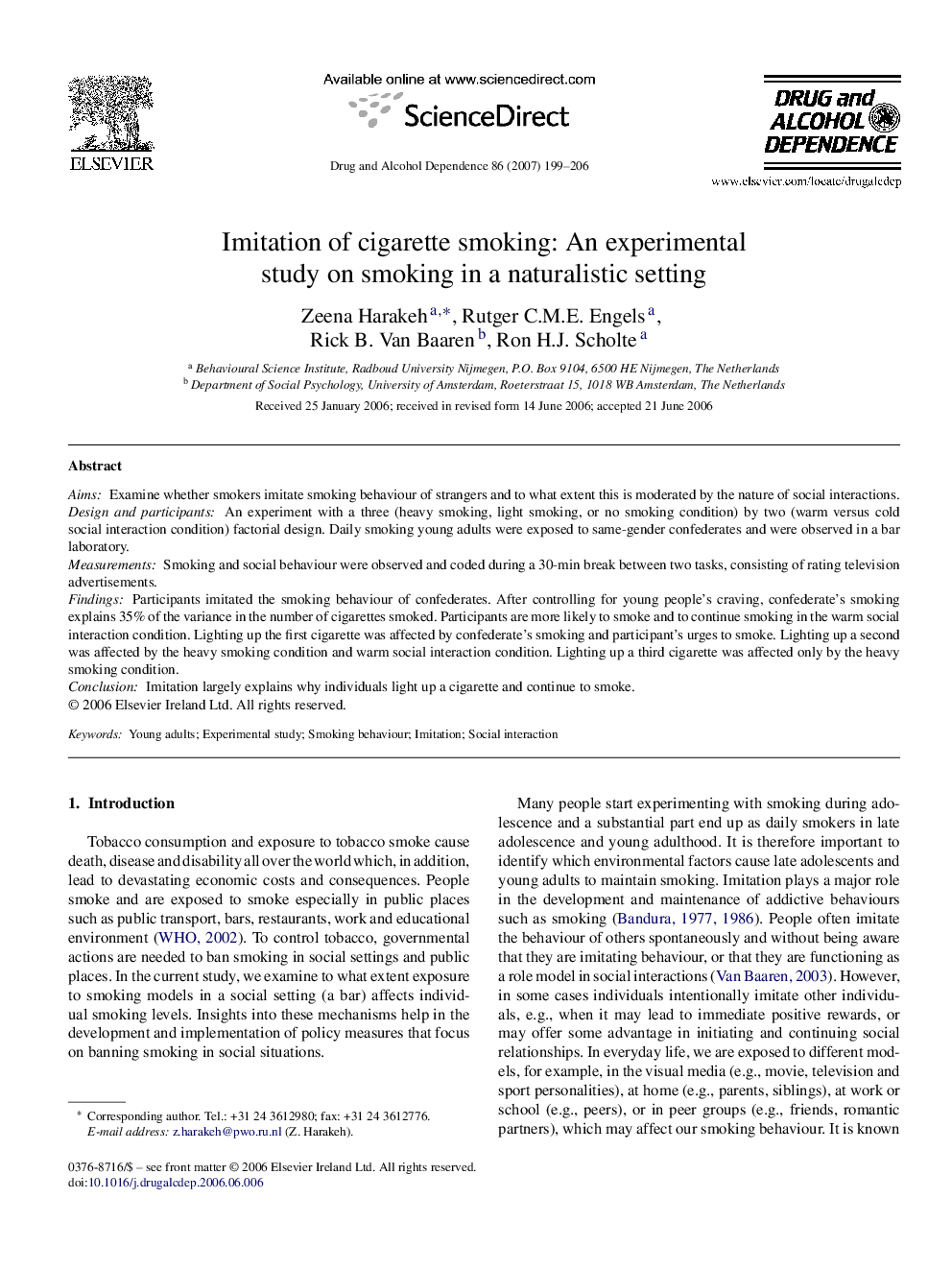| Article ID | Journal | Published Year | Pages | File Type |
|---|---|---|---|---|
| 1071745 | Drug and Alcohol Dependence | 2007 | 8 Pages |
AimsExamine whether smokers imitate smoking behaviour of strangers and to what extent this is moderated by the nature of social interactions.Design and participantsAn experiment with a three (heavy smoking, light smoking, or no smoking condition) by two (warm versus cold social interaction condition) factorial design. Daily smoking young adults were exposed to same-gender confederates and were observed in a bar laboratory.MeasurementsSmoking and social behaviour were observed and coded during a 30-min break between two tasks, consisting of rating television advertisements.FindingsParticipants imitated the smoking behaviour of confederates. After controlling for young people's craving, confederate's smoking explains 35% of the variance in the number of cigarettes smoked. Participants are more likely to smoke and to continue smoking in the warm social interaction condition. Lighting up the first cigarette was affected by confederate's smoking and participant's urges to smoke. Lighting up a second was affected by the heavy smoking condition and warm social interaction condition. Lighting up a third cigarette was affected only by the heavy smoking condition.ConclusionImitation largely explains why individuals light up a cigarette and continue to smoke.
